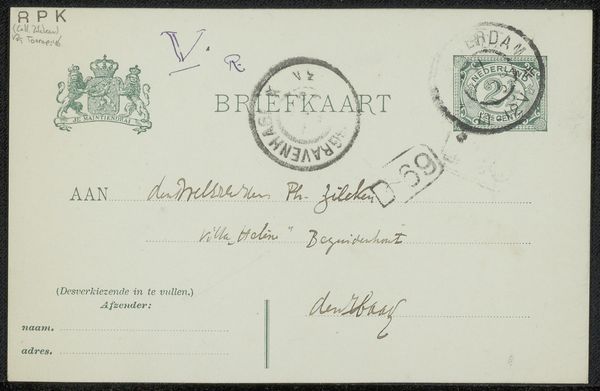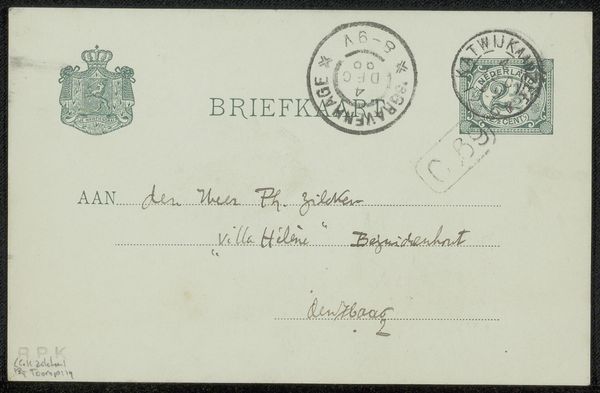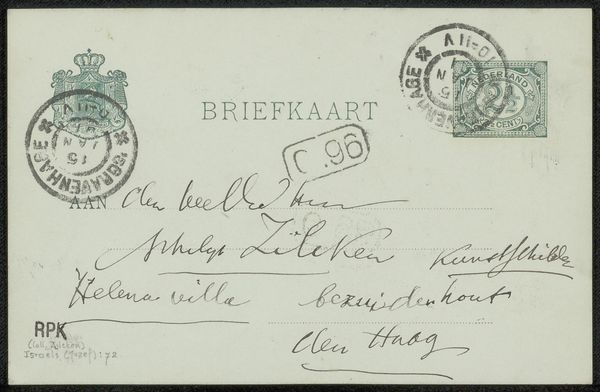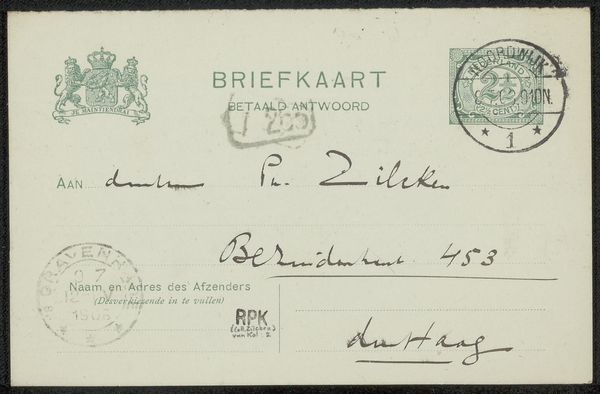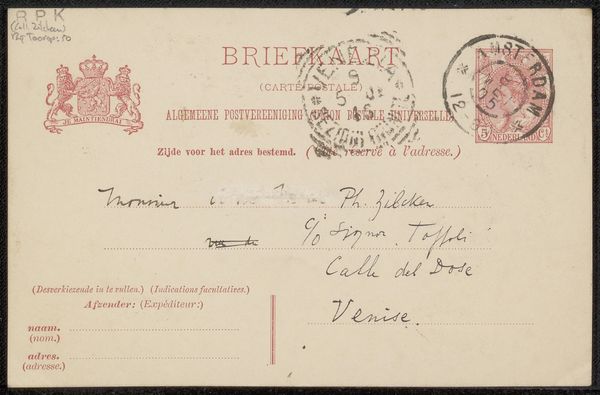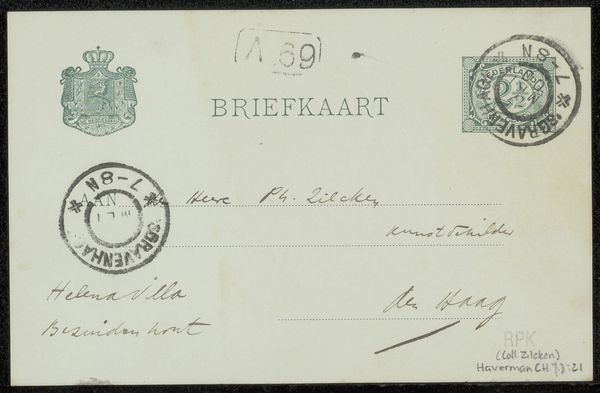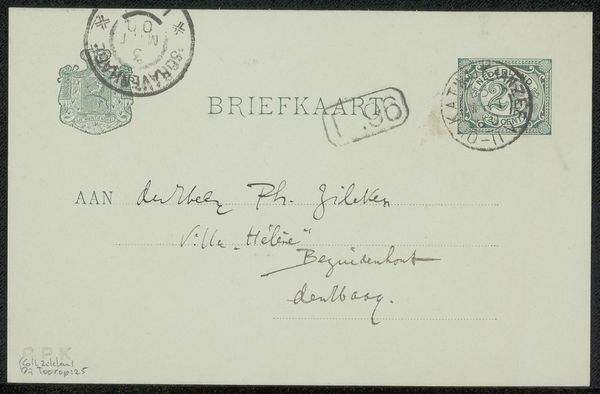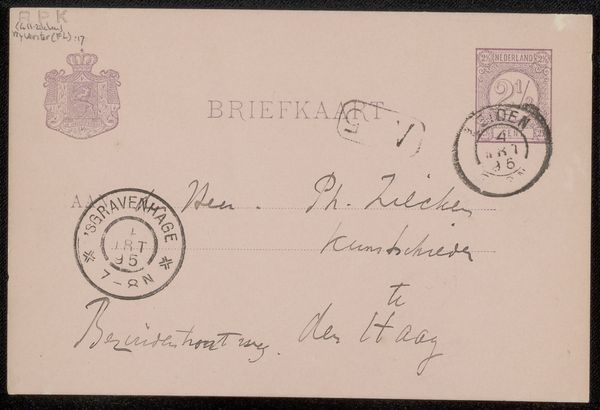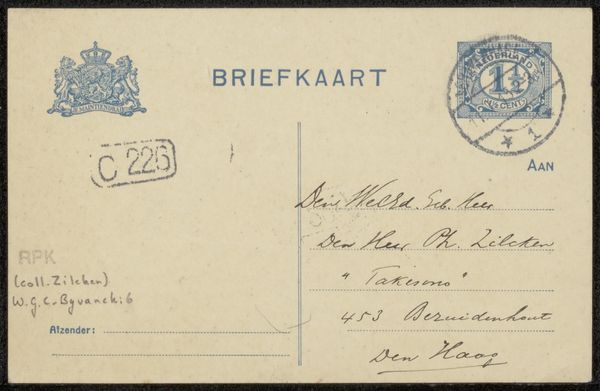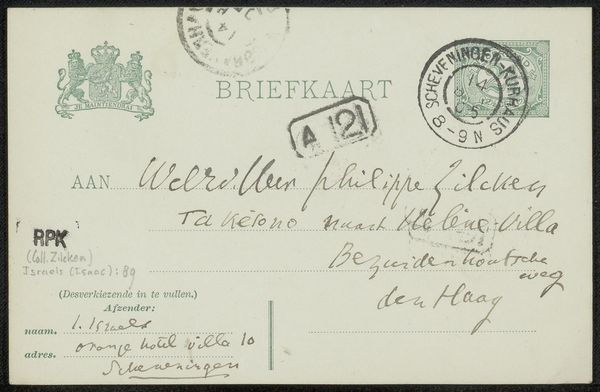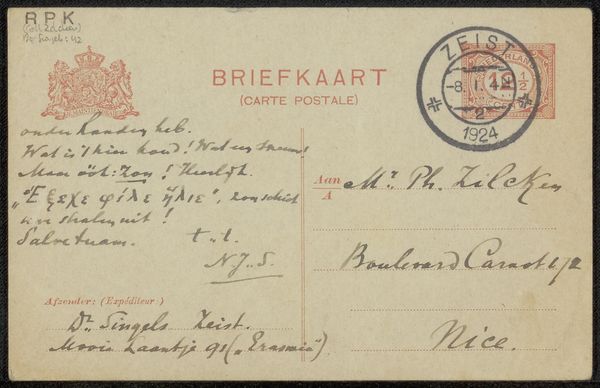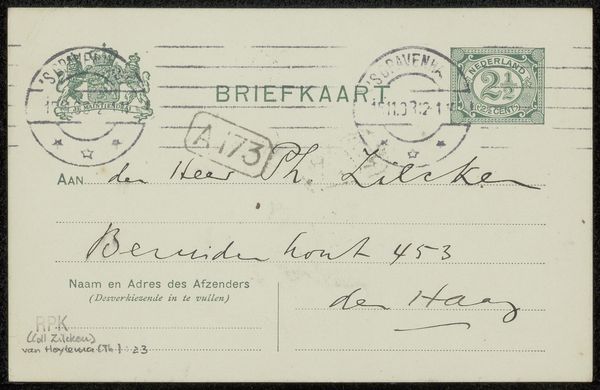
print, paper
#
portrait
# print
#
paper
#
post-impressionism
Copyright: Rijks Museum: Open Domain
Curator: This delicate postal correspondence, known as "Briefkaart aan Philip Zilcken," might date back to 1905 and it is from the hand of Jan Toorop. Currently, it's part of the Rijksmuseum's collection, a poignant paper print. Editor: What immediately strikes me is the starkness. The composition is so direct. It’s unadorned, save for the handwriting, the stamps, the official markings of the time, all of it pressed onto paper. A minimalist aesthetic for its time, wouldn’t you say? Curator: Absolutely. This work embodies the post-impressionist aesthetic. Consider it: A seemingly innocuous piece of correspondence transformed into an object worthy of display. We can reflect on the act of communication and its social context at the turn of the century. Who were Zilcken and Villie, and what does the act of sending a postcard signify in their relationship and society? The postmark and royal seal also underscore themes of nationhood and governance that are deeply fascinating. Editor: Note how the artist engages with layering of texts: there is pre-printed text for formal details and handwriting completing it and adding a human quality to the document. And these traces of officialdom contrast the organic, slightly whimsical handwriting. How do those juxtapositions operate aesthetically? Curator: I think Toorop uses it as an opportunity to insert the personal into the rigid structure of society, resisting some kind of formality. He imbues an act rooted in societal regulations with individuality. Perhaps the act of writing and sending represents something subversive or progressive, in dialogue with early feminist movements. Editor: Yes, the subversion comes from imbuing a very public and bureaucratic means with a personalized intention. What remains are textural juxtapositions – the layering of paper and ink, script and seal – all converging on this singular, material plane. The interaction among them creates its unique visual tension, don't you agree? Curator: Agreed. Viewing something as seemingly commonplace as a vintage postcard provokes many considerations of personhood, authorship, and legacy in an art context. Editor: Indeed, a single glance prompts us to reconsider not only visual codes but the silent narratives embedded within the artwork's surface.
Comments
No comments
Be the first to comment and join the conversation on the ultimate creative platform.

